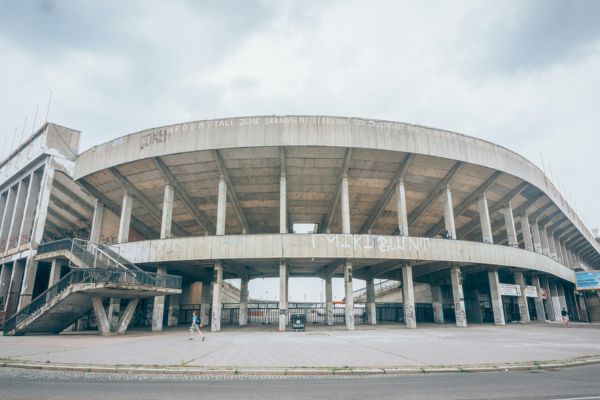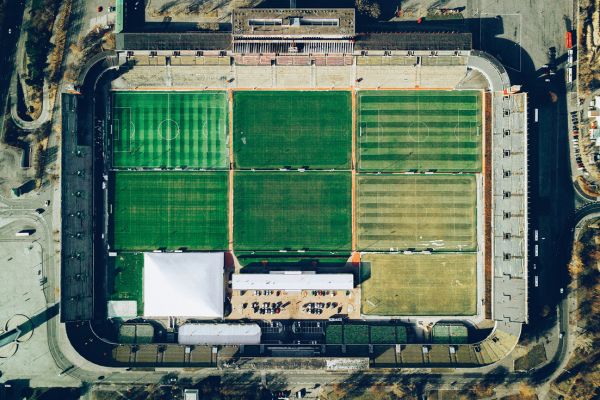It’s an autumn day in October 2003. The opening ceremony is over, but something significant has just begun — a fresh start for two of Prague’s most iconic football institutions. On this day, the futures of AC Sparta Prague and the Great Strahov Stadium became intertwined, in a bold bid to breathe new life into an aging giant.
So how did one of Czech football’s most famous clubs come to revive a forgotten colossus?
A Stadium Like No Other

Originally built in the 1930s, the Strahov Stadium became synonymous with scale. At its peak, it could hold over 200,000 people, making it the largest stadium in the world by capacity. But it wasn’t built for football — its immense field hosted mass synchronized gymnastic displays during events like Sokol rallies and Spartakiads, with up to 14,000 participants performing at once.
But the stadium’s history has darker chapters too. During World War II, it hosted a military parade for Hitler’s birthday, and was reportedly used as an assembly point for Jewish prisoners during Nazi occupation.
In the decades that followed, Strahov saw everything from speedway races to rock concerts — hosting legends like The Rolling Stones and Pink Floyd. It did host some football over the years, but it was never a true home to the sport.
By the late 1990s, the giant had fallen quiet. Events moved elsewhere. Weeds crept in. Strahov became a decaying relic — once awe-inspiring, now forgotten.
Sparta Steps In
Then came a turning point. In the early 2000s, AC Sparta Prague announced plans to convert the space into a youth training center — not to restore it as a venue, but to give it new purpose. Their aim? To develop future stars. Or as Sparta put it: “find the next Tomáš Rosický.”

In 2003, the Sparta Strahov Youth Training Centre officially opened, set within the shell of the old stadium. The structure still bears the marks of its age, but the facilities inside are anything but outdated.
The sheer size of Strahov’s pitch allowed Sparta to fit eight full-sized practice fields within the stadium’s grounds, a feature unique to the venue. With its vast diameter — much larger than that of most typical football fields — the stadium became the perfect setting for year-round training, ensuring that the youth academy could operate at full capacity.
The center includes eight pitches with artificial lighting for year-round use, alongside a two-storey player hub equipped with changing rooms, rehab spaces, a gym, a restaurant, a cinema room, and everything a modern academy needs to nurture talent.
From Forgotten Giant to Football Factory

Strahov is a rare example of a historic sports venue that’s been saved from the wrecking ball and repurposed with real vision. Though it was never truly a football cathedral in its heyday, today it quietly powers Czech football’s future.
There’s something poetic about this transformation — that beneath the gaze of the world’s largest stadium, the next Czech stars are being molded in silence.
A Personal Parallel
A similar story unfolded in North London, when Arsenal moved out of Highbury Stadium in 2006. Two of its iconic stands were preserved due to their architectural value, and the old pitch is now a peaceful garden surrounded by apartments. Another example of giving a stadium new life, without erasing its past.
